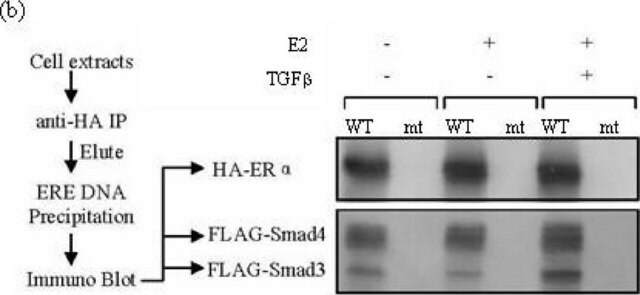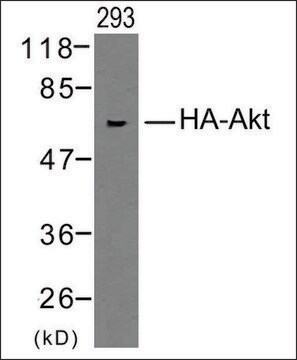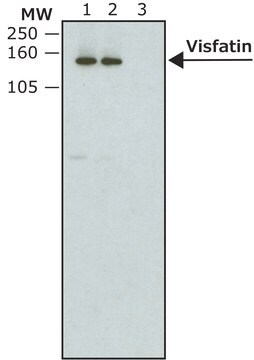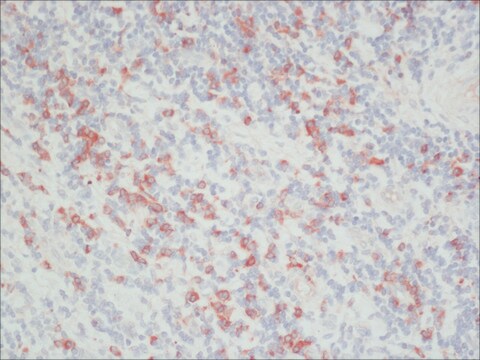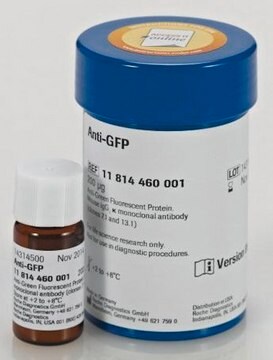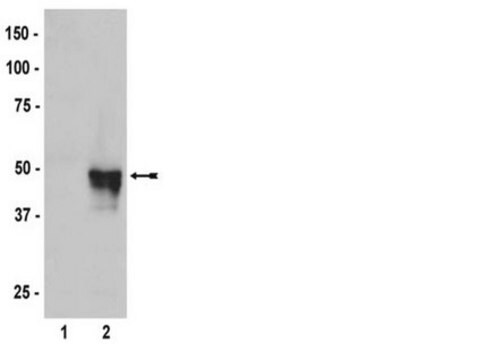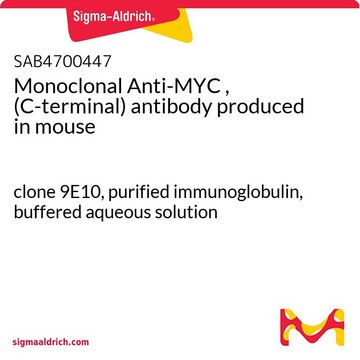12013819001
Roche
Anti-HA-Peroxidase, High Affinity
from rat IgG1
Synonyme(s) :
antibody
About This Item
Produits recommandés
Source biologique
rat
Niveau de qualité
Conjugué
peroxidase conjugate
Forme d'anticorps
purified immunoglobulin
Type de produit anticorps
primary antibodies
Clone
clone 3F10, monoclonal
Forme
lyophilized (clear, colorless solution after reconstitution)
Conditionnement
pkg of 25 U (25 μg)
Fabricant/nom de marque
Roche
Isotype
IgG1
Séquence de l'épitope
YPYDVPDYA
Température de stockage
2-8°C
Catégories apparentées
Description générale
Spécificité
This epitope is also recognized in fusion proteins regardless of its position (N-terminal, C-terminal or internal).
Immunogène
Application
- Use Anti-HA-Peroxidase, High Affinity for the detection of HA-tagged recombinant proteins using: ELISA
- Western blot
Notes préparatoires
Working concentration: The working concentration of conjugate depends on application and substrate.
The following concentrations should be taken as a guideline:
- Dot blot: 50 mU/ml
- ELISA: 25 mU/ml
- Western blot: 50 mU/ml
Reconstitution
Rehydrate for 10 min prior to use.
Autres remarques
Vous ne trouvez pas le bon produit ?
Essayez notre Outil de sélection de produits.
Mention d'avertissement
Warning
Mentions de danger
Conseils de prudence
Classification des risques
Skin Sens. 1
Code de la classe de stockage
11 - Combustible Solids
Classe de danger pour l'eau (WGK)
WGK 1
Point d'éclair (°F)
does not flash
Point d'éclair (°C)
does not flash
Certificats d'analyse (COA)
Recherchez un Certificats d'analyse (COA) en saisissant le numéro de lot du produit. Les numéros de lot figurent sur l'étiquette du produit après les mots "Lot" ou "Batch".
Déjà en possession de ce produit ?
Retrouvez la documentation relative aux produits que vous avez récemment achetés dans la Bibliothèque de documents.
Les clients ont également consulté
Notre équipe de scientifiques dispose d'une expérience dans tous les secteurs de la recherche, notamment en sciences de la vie, science des matériaux, synthèse chimique, chromatographie, analyse et dans de nombreux autres domaines..
Contacter notre Service technique




